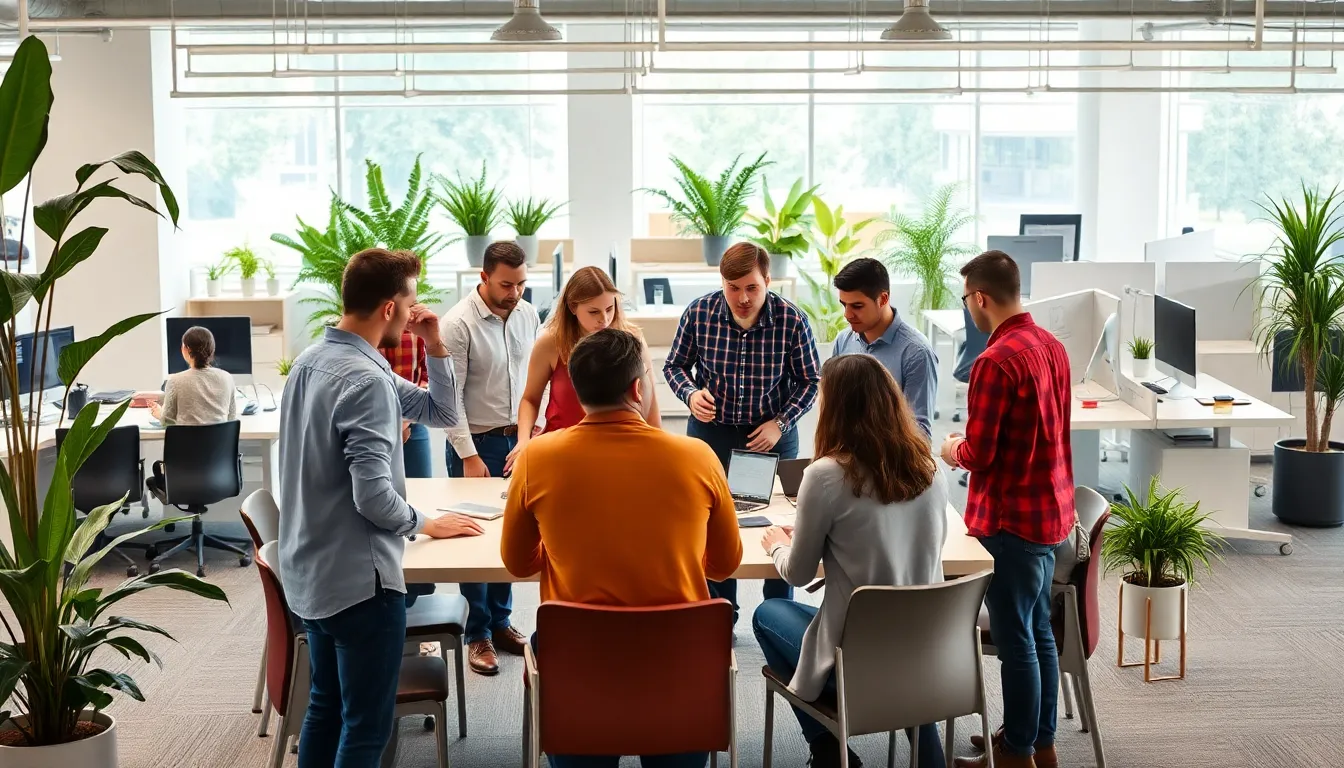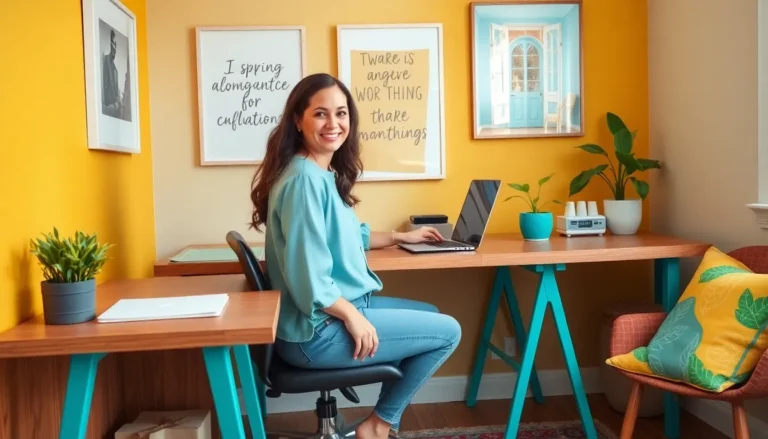Table of Contents
ToggleIn today’s fast-paced work environment, office space planning isn’t just about fitting desks and chairs into a room. It’s an art form that can boost productivity, enhance collaboration, and even reduce stress. Imagine walking into an office that feels like a well-choreographed dance rather than a chaotic shuffle. It’s not just a dream; it’s achievable with smart planning!
Understanding Office Space Planning
Office space planning encompasses creating functional environments that cater to employee needs. This process involves analyzing various elements for optimal workflow and interaction.
Importance of Office Space Planning
Effective office space planning significantly influences productivity and employee well-being. Studies reveal that well-designed workspaces can boost efficiency by 20%. Meanwhile, a thoughtfully organized layout facilitates better communication and collaboration among team members. Stress levels tend to decrease in harmonious environments, leading to enhanced job satisfaction. Companies that invest in spatial design often experience lower turnover rates, reflecting the strong link between workspace quality and employee retention.
Key Components of Effective Planning
Several key components contribute to successful office space planning. First, understanding employee roles and functions aids in designing suitable areas for focused work and teamwork. Second, considering flexible layouts promotes adaptability to evolving business needs. Efficient utilization of natural light enhances aesthetics and well-being, making a pleasant atmosphere. Integrating technology becomes crucial, ensuring that employees can easily access the tools they need. Finally, incorporating areas for relaxation boosts morale, fostering a balanced work-life environment.
Best Practices for Office Space Planning

Effective office space planning hinges on understanding employee needs and promoting flexibility in design. These practices boost productivity and enhance workplace satisfaction.
Analyzing Employee Needs
Understanding employee roles and preferences marks the first step in effective planning. Gathering feedback from team members reveals their workspace requirements. Conducting surveys provides insight into how employees use the office environment. Observing daily workflows helps identify areas requiring improvement. Prioritizing collaboration spaces versus quiet areas influences layout choices. Allocating resources for various work styles fosters diversity in the workplace. Employee needs assessments lead to targeted design strategies that maximize comfort and efficiency. Thus, knowing what employees want creates a tailored environment conducive to productivity.
Incorporating Flexibility
Incorporating flexibility transforms office layouts into adaptable environments. Configuring spaces that can adjust to different activities enhances functionality. Movable furniture options allow for rapid reconfiguration of settings. Teams benefit from areas that can transition between collaboration and individual work quickly. Designing multipurpose areas also accommodates various functions, such as meetings or social gatherings. Expanding options for remote work through hot-desking increases overall satisfaction. Flexible planning creates an atmosphere where employees can thrive, promoting creativity and collaboration. Such adaptability not only meets immediate needs but also anticipates future changes in workplace dynamics.
Trends in Office Space Design
Current trends in office space design focus on balancing open and closed spaces to accommodate a variety of work styles and preferences.
Open vs. Closed Spaces
Open spaces promote collaboration and interaction among employees. They encourage spontaneous conversations and idea-sharing, vital for fostering innovation. However, distractions can hinder focus. Closed spaces offer privacy for tasks requiring concentration. They cater to activities that benefit from reduced noise and interruptions. Many companies opt for a mix of both, ensuring a versatile environment that addresses diverse employee needs.
The Rise of Collaborative Areas
Collaborative areas are becoming essential in modern office design. These spaces are designed specifically for teamwork and brainstorming sessions. Furniture arrangements in these areas often facilitate group discussions and creative thinking. Companies recognize that adaptable spaces increase productivity and employee engagement. Incorporating features like writable surfaces and comfortable seating further enhances collaboration. Employees often report higher satisfaction levels when they can easily connect with colleagues in a collaborative setting.
Tools and Technology for Space Planning
Effective office space planning benefits from advanced tools and technology that enhance design and management processes.
Space Management Software
Utilizing space management software streamlines the planning process, allowing organizations to maximize their workspace efficiently. These platforms provide data analytics that reveal utilization rates and identify underused areas. Options like Archibus and Manhattan Software offer features such as real-time tracking and visualization of layouts. By leveraging these tools, companies can make informed decisions regarding space allocation and future needs, optimizing environments for employee productivity and satisfaction. Tracking occupancy trends enables adjustments to foster a collaborative atmosphere while reducing wasted square footage.
Virtual Reality in Planning
Virtual reality (VR) transforms office space planning by offering immersive experiences that visualize designs before implementation. Employees can explore layouts in a simulated environment, providing valuable feedback and fostering collaboration. Companies such as Spatial and IrisVR allow teams to interact with 3D models, enhancing understanding of flow and spatial relationships. Immersive technology informs decision-making and addresses concerns related to workspace designs. By integrating VR, businesses can create engaging environments tailored to employee needs, ultimately boosting satisfaction and performance.
Effective office space planning is essential for creating a productive and satisfying work environment. By understanding employee needs and embracing flexibility in design, organizations can foster collaboration and creativity while reducing stress. The integration of modern tools and technology enhances the planning process, allowing for informed decisions that optimize space utilization.
Balancing open and closed areas caters to diverse work styles, ensuring that employees can thrive in both collaborative and focused settings. Companies that prioritize thoughtful office design not only improve employee satisfaction but also enhance overall performance, leading to a more engaged and motivated workforce. Embracing these strategies positions businesses for success in an ever-evolving workplace landscape.





